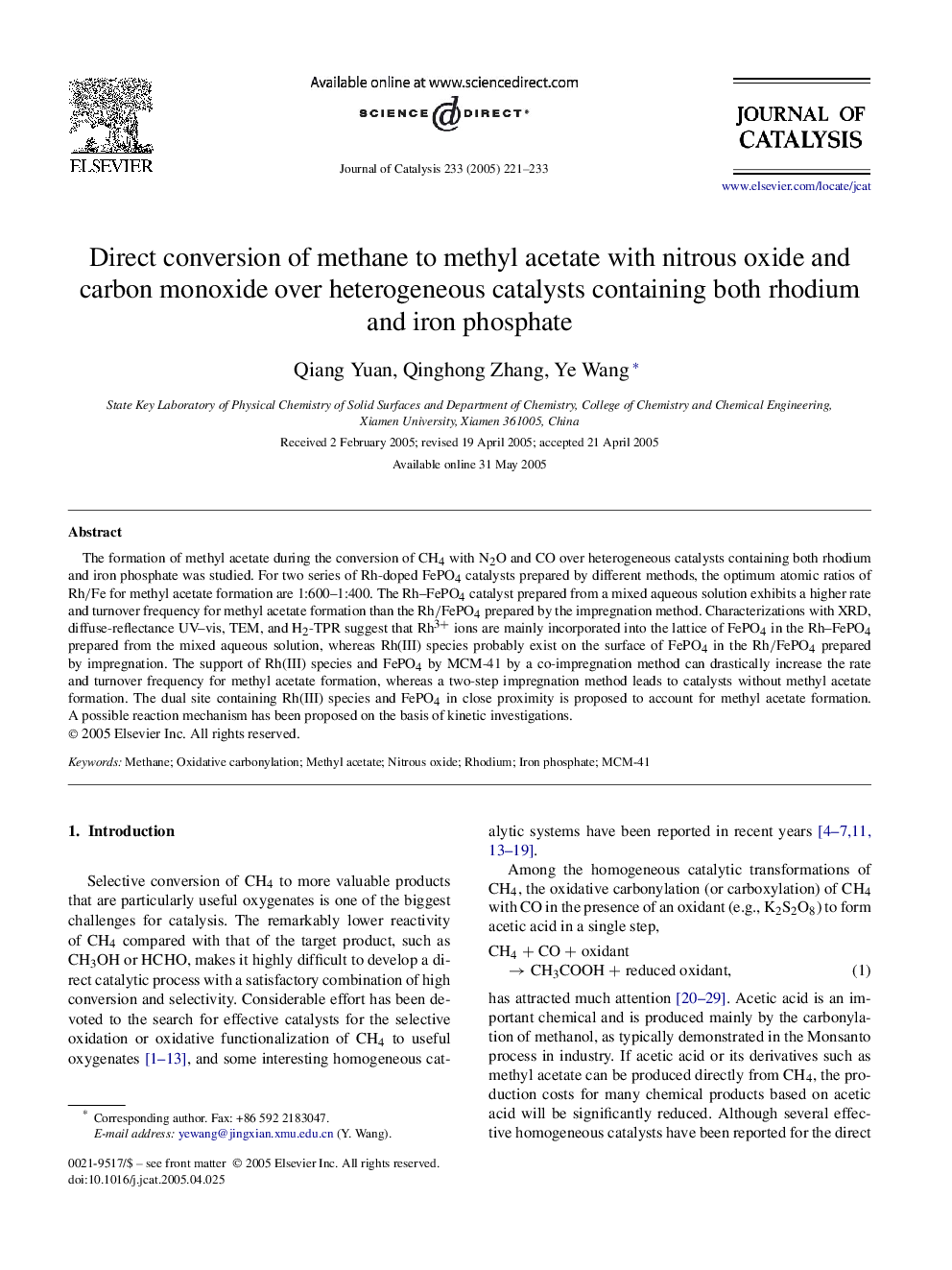| Article ID | Journal | Published Year | Pages | File Type |
|---|---|---|---|---|
| 10244789 | Journal of Catalysis | 2005 | 13 Pages |
Abstract
The formation of methyl acetate during the conversion of CH4 with N2O and CO over heterogeneous catalysts containing both rhodium and iron phosphate was studied. For two series of Rh-doped FePO4 catalysts prepared by different methods, the optimum atomic ratios of Rh/Fe for methyl acetate formation are 1:600-1:400. The Rh-FePO4 catalyst prepared from a mixed aqueous solution exhibits a higher rate and turnover frequency for methyl acetate formation than the Rh/FePO4 prepared by the impregnation method. Characterizations with XRD, diffuse-reflectance UV-vis, TEM, and H2-TPR suggest that Rh3+ ions are mainly incorporated into the lattice of FePO4 in the Rh-FePO4 prepared from the mixed aqueous solution, whereas Rh(III) species probably exist on the surface of FePO4 in the Rh/FePO4 prepared by impregnation. The support of Rh(III) species and FePO4 by MCM-41 by a co-impregnation method can drastically increase the rate and turnover frequency for methyl acetate formation, whereas a two-step impregnation method leads to catalysts without methyl acetate formation. The dual site containing Rh(III) species and FePO4 in close proximity is proposed to account for methyl acetate formation. A possible reaction mechanism has been proposed on the basis of kinetic investigations.
Related Topics
Physical Sciences and Engineering
Chemical Engineering
Catalysis
Authors
Qiang Yuan, Qinghong Zhang, Ye Wang,
